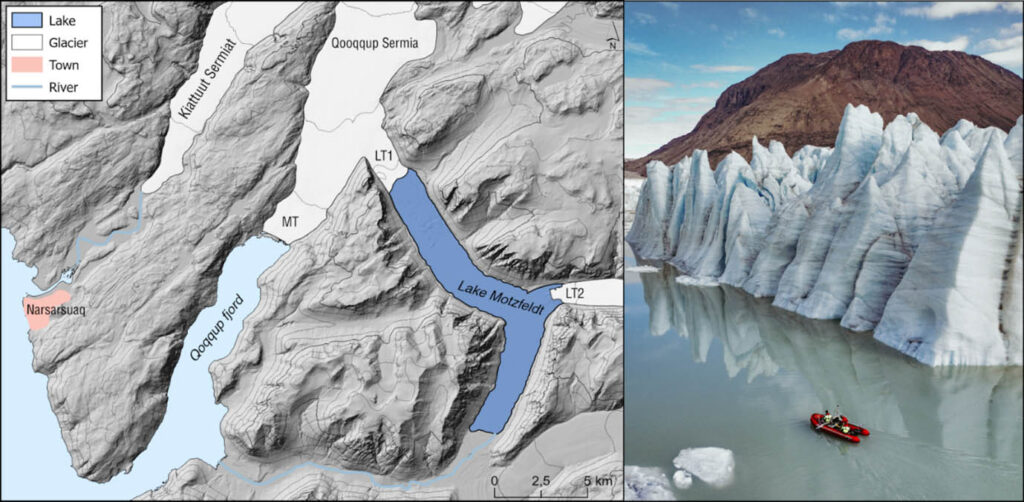With ongoing climate change, ice sheet margins and mountain glaciers are retreating at an increasing rate. As glaciers retreat, proglacial lakes form in previously ice-covered bedrock depressions, significantly impacting glacier mass loss. Glaciers terminating in lakes experience faster melting than those ending on land due to calving, increased ice flow, and subaqueous melting. This creates a positive feedback loop, where increased melting leads to further lake expansion and intensified ice loss.
While marine-terminating glaciers in Greenland have been studied intensively, relatively little research exists on ice-marginal lakes and lake-terminating glaciers. This project will fill that gap by exploring the key processes behind glacier-lake interactions. By enhancing our understanding of how proglacial lakes influence glacier mass loss in Greenland, we aim to provide insights that will support better future predictions of ice loss from the Greenland Ice Sheet.
Objectives
- Investigate the physical processes driving glacier calving in proglacial lakes.
- Compare calving behaviour between lake-terminating and marine-terminating glaciers to identify differences in their retreat patterns and contributing factors.
- Assess the impact of environmental conditions such as subaqueous melt, ice-mélange, and surface runoff on glacier flow and calving rates.
Approach
Using a combination of field observations, remote sensing, and numerical modelling, we will analyse the factors influencing calving dynamics. Our field research will focus on glaciers near Narsarsuaq, South Greenland. This region provides an ideal natural laboratory where glaciers exist under similar climatic conditions, allowing us to isolate the effects of lake properties and glacier geometry on mass loss. Our findings will contribute to a broader understanding of ice loss in a warming world.

